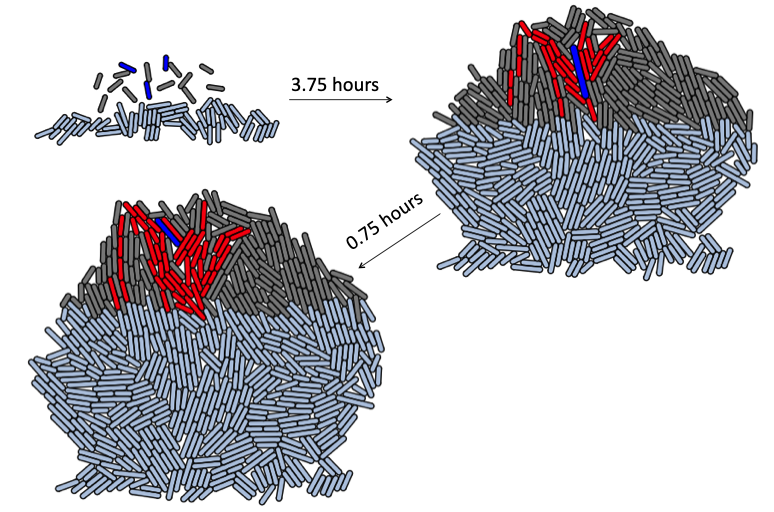Collaborators: G. Stephenson, Amit Nadig, Shashi Thutupalli, Vijaykumar Krishnamoorthy
Lambda phages infect E. Coli in two stages. Just after infection is a period of calm before the storm, the lysogenic phase (red cells below). In lysogenic phase the bacterium genome integrates the viral genome in itself. The integrated viral genome stays dormant as the bacteria grows and divides, the daughter cells inheriting the infected genome. The viral genome can start making copies of the virus in the daughter cell pst replication or pending a time delay. As the viral genome “activates”, the cell enters the lytic phase.
In lytic phase (blue cells below), the rod-like E. Coli, instead of dividing, keep growing into large and thick filamentous rods almost two to three times the length of an uninfected E. Coli. The next phase is a lytic burst. The virus which has been multiplying inside the filamentous E. Coli bursts out. E. Coli famously grow as a field of nematics over which the newly created phages will surf. How does the competition between growth, alignment, and infection play out? We study this in experiments and agent-based simulations.

This study was presented in a talk at March Meeting 2022 by my collaborator Dr. Godwin Stephenson.